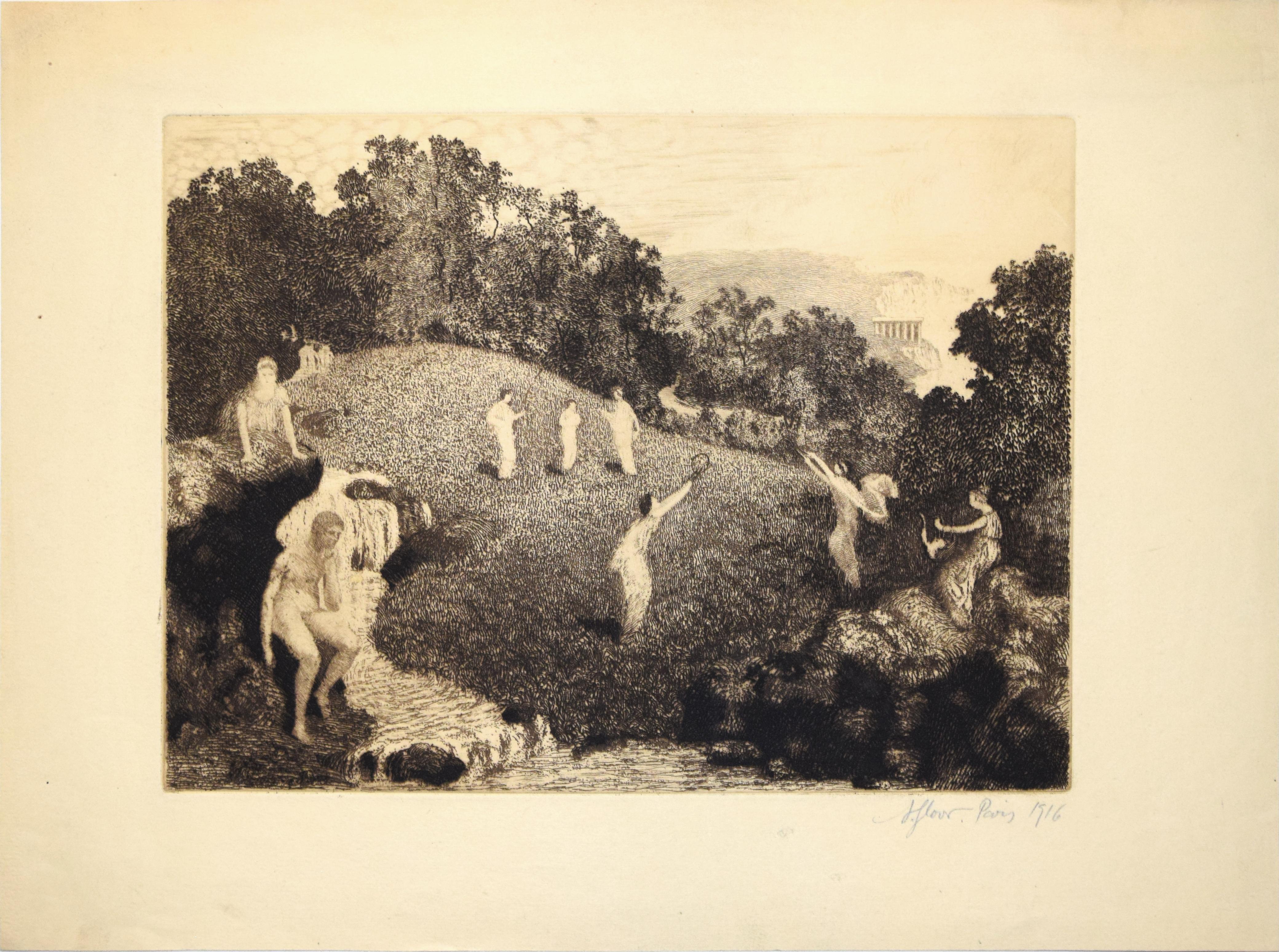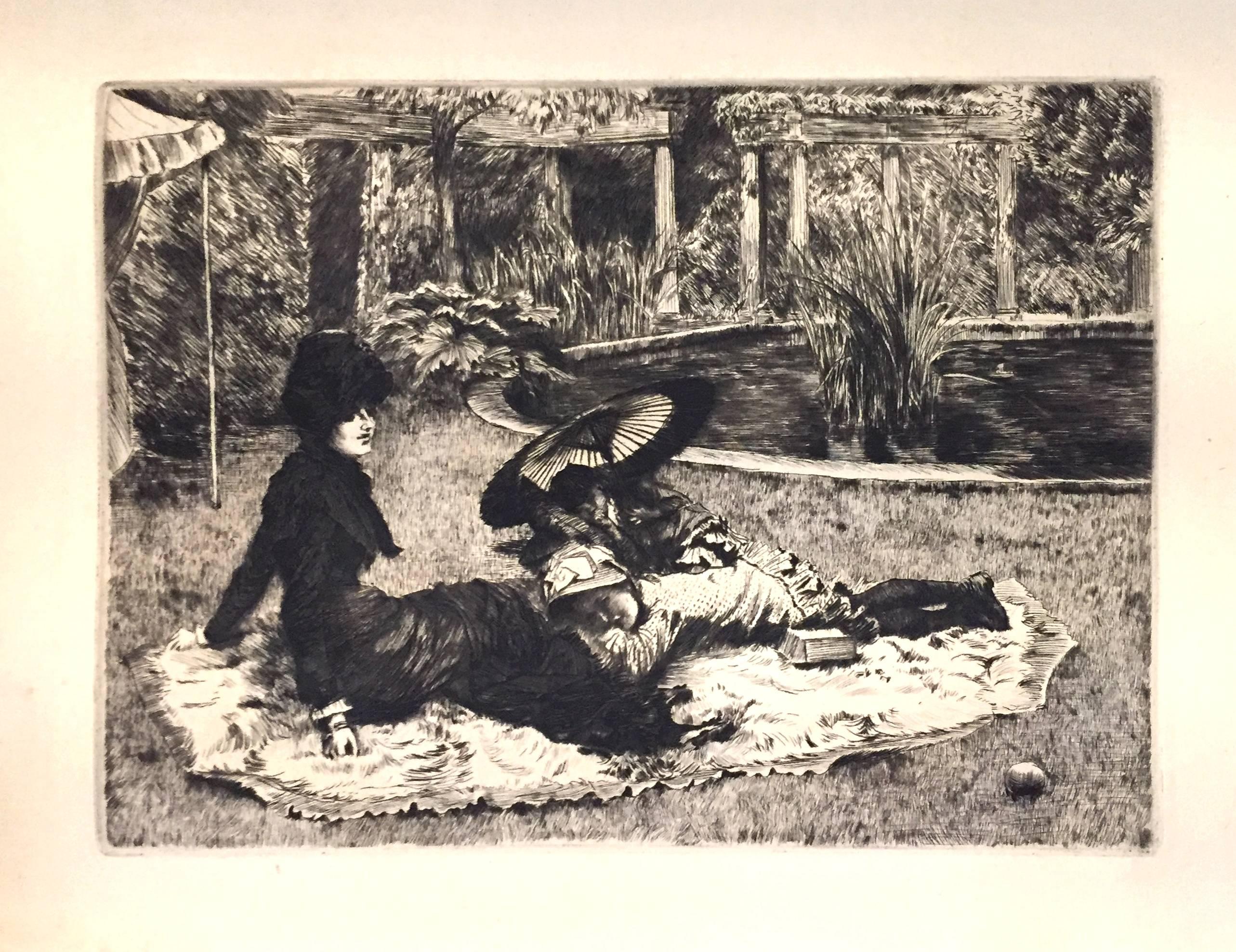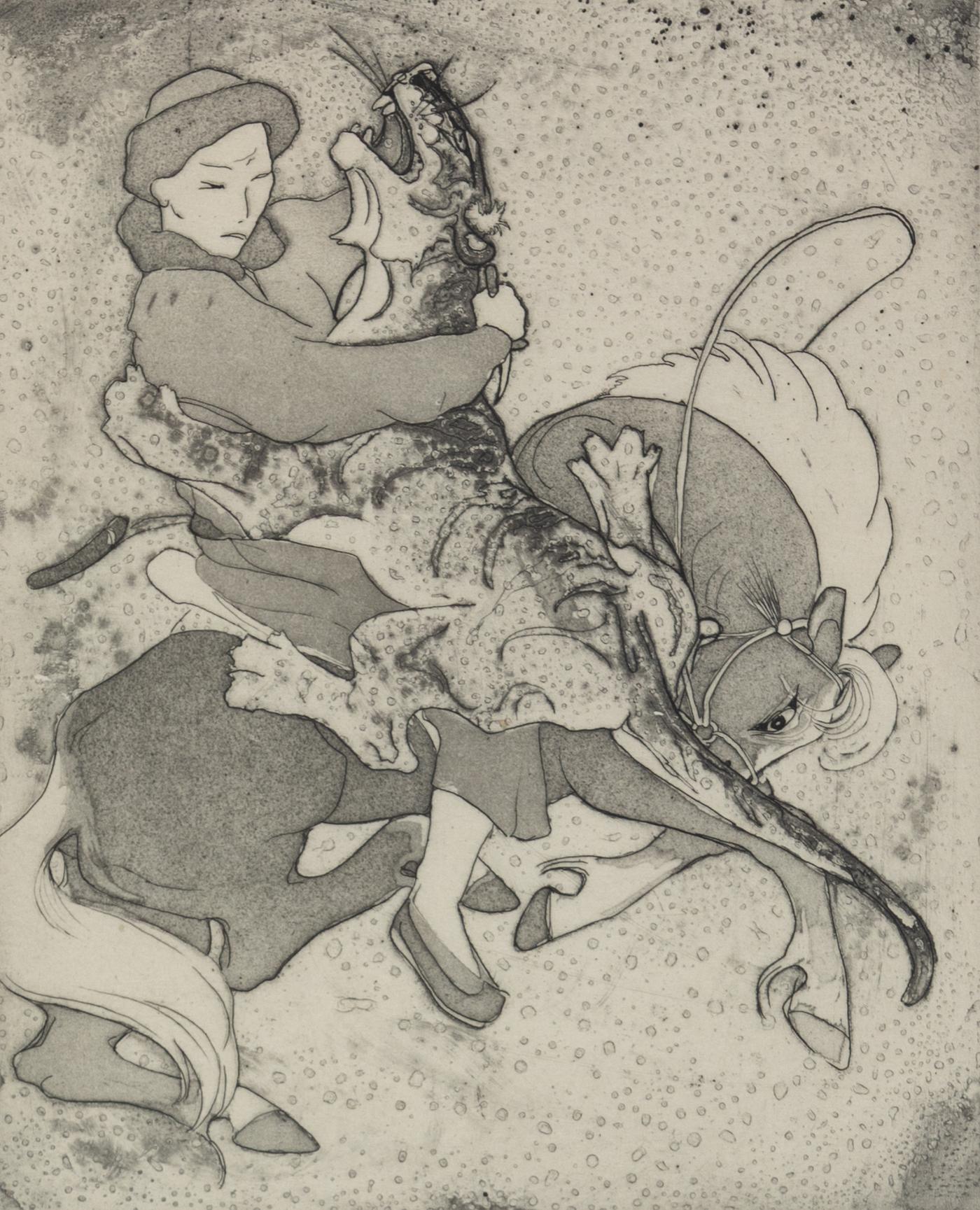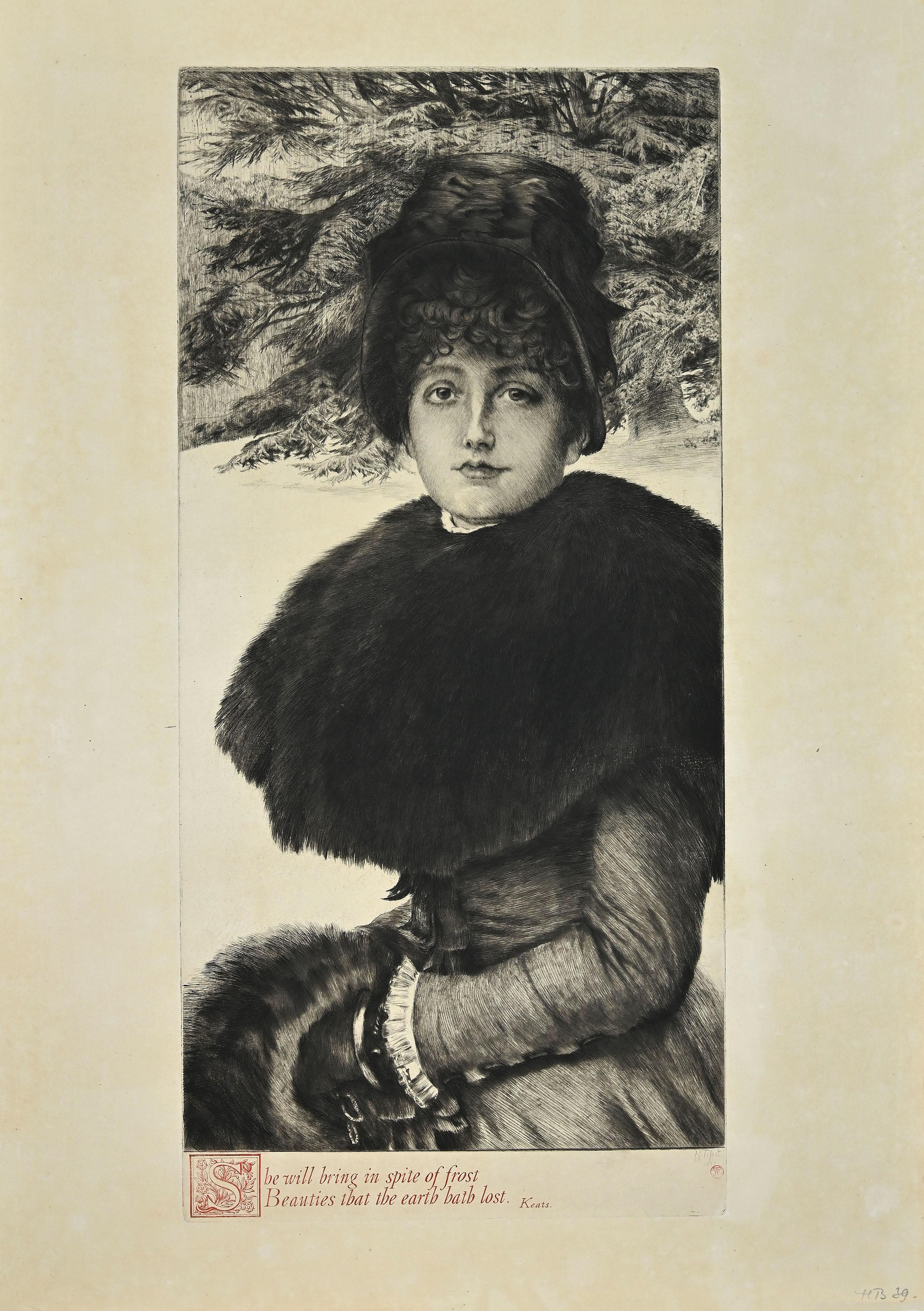Items Similar to La Tétée de la Mère et ses Enfants - Etching by F. Charlet - Early 1900
Want more images or videos?
Request additional images or videos from the seller
1 of 6
Frantz CharletLa Tétée de la Mère et ses Enfants - Etching by F. Charlet - Early 1900Early 1900
Early 1900
About the Item
La Tétée de la Mère et ses Enfants is a color etching realized by the Belgian artist Frantz Charlet in the early 20th century.
It is a beautiful and touching domestic scene portraying a woman breastfeeding her little child, surrounded by two children.
Dimensions: cm 63,5 x 45,5. Image dimensions: cm 45 x 36. In very good condition.
Lovely artwork by Frantz Charlet (1862–1928), a Belgian painter, etcher, and lithographer. Considered as an Impressionist, he was one of the founding member of Les XX.
- Creator:Frantz Charlet (1862 - 1928, Belgian)
- Creation Year:Early 1900
- Dimensions:Height: 25.01 in (63.5 cm)Width: 17.92 in (45.5 cm)Depth: 0.08 in (2 mm)
- Medium:
- Movement & Style:
- Period:
- Condition:Insurance may be requested by customers as additional service, contact us for more information.
- Gallery Location:Roma, IT
- Reference Number:
About the Seller
4.9
Platinum Seller
These expertly vetted sellers are 1stDibs' most experienced sellers and are rated highest by our customers.
1stDibs seller since 2017
6,824 sales on 1stDibs
Typical response time: 3 hours
- ShippingRetrieving quote...Ships From: Grasse, France
- Return PolicyA return for this item may be initiated within 14 days of delivery.
More From This SellerView All
- Figures in the Landscape - Etching by J. A. Flour - 1916By Jules Adrian FlourLocated in Roma, ITFigures in the Landscape is an original artwork realized by Jules Adrian Flour in 1916. Original etching on paper. The artwork is glued on cardboard. Hand-signed in pencil by the ar...Category
1910s Post-Impressionist Figurative Prints
MaterialsEtching
- On the Grass - Etching and Drypoint by J. Tissot - 1880By James TissotLocated in Roma, ITVery fine print on verge crème. Some small traces of oxidation, dust and some flowerings on external edges of sheet, otherwise excellent conditions. Full margins. Ref. Wentworth 50.Category
1880s Post-Impressionist Landscape Prints
MaterialsDrypoint, Etching
- Les Allies a VersaillesBy George BarbierLocated in Roma, ITSigned on plate. From the portfolio “Le Bonheur du Jour” by George Barbier. Etching and Pochoir. Passepartout included : 49 x 34 cmCategory
1920s Post-Impressionist Figurative Prints
MaterialsEtching
- Promenade dans la Neige - Etching by J. Tissot - 1880By James TissotLocated in Roma, ITBeautiful print on verge crème, 2° state on 3, with letters printed in red. Stamp “Lugt 1545”. Little crack and fold on lower left margin of the sheet. Some small traces of oxidati...Category
1880s Post-Impressionist Portrait Prints
MaterialsDrypoint, Etching
- Portrait of Woman - Original Etching by Edouard Chimot - Early 20th CenturyBy Édouard ChimotLocated in Roma, ITTwo Figures is an Original etching monotype realized by Edouard Chimot. The artwork is in good condition on the yellowed paper, included a cardboard passpartout (51x35 cm). Hand-si...Category
Early 20th Century Post-Impressionist Figurative Prints
MaterialsEtching
- The Rag Gatherers - Original Etching by J.A. Whistler - 1858By James Abbott McNeill WhistlerLocated in Roma, ITSigned and dated on plate. An early state on the 5 issued, with very fresh impression and marked contrasts, Includes passepartout (cm. 53x37). The American artist James Abbott McNei...Category
1850s Post-Impressionist Figurative Prints
MaterialsEtching
You May Also Like
- Chatter by Orovida Pissarro - EtchingBy Orovida PissarroLocated in London, GBChatter by Orovida Pissarro (1893-1968) Etching 26 x 19 cm (10 ¹/₄ x 7 ¹/₂ inches) Signed and dated lower right Orovida 1927 Inscribed lower left Trial proof no. 18/25 and titled lower middle Artist biography: Orovida Camille Pissarro, Lucien and Esther Pissarro’s only child, was the first woman in the Pissarro family as well as the first of her generation to become an artist. Born in Epping, England in 1893, she lived and worked predominantly in London where she became a prominent member of several British arts clubs and societies. She first learned to paint in the Impressionist style of her father, but after a brief period of formal study with Walter Sickert in 1913 she renounced formal art schooling. Throughout her career, Orovida always remained outside of any mainstream British art movements. Much to Lucien's disappointment she soon turned away from naturalistic painting and developed her own unusual style combining elements of Japanese, Chinese, Persian and Indian art. Her rejection of Impressionism, which for the Pissarro family had become a way of life, together with the simultaneous decision to drop her famous last name and simply use Orovida as a ‘nom de peintre’, reflected a deep desire for independence and distance from the weight of the family legacy. Orovida's most distinctive and notable works were produced from the period of 1919 to 1939 using her own homemade egg tempera applied in thin, delicate washes to silk, linen or paper and sometimes embellished with brocade borders. These elegant and richly decorative works generally depict Eastern, Asian and African subjects, such as Mongolian horse...Category
1920s Post-Impressionist Figurative Prints
MaterialsEtching
- Man & Beast by Orovida Pissarro - EtchingBy Orovida PissarroLocated in London, GB*UK BUYERS WILL PAY AN ADDITIONAL 20% VAT ON TOP OF THE ABOVE PRICE Man & Beast by Orovida Pissarro (1893-1968) Etching 27 x 22 cm (10 ⁵/₈ x 8 ⁵/₈ inches) Signed and dated lower right, orovida 1924 Inscribed lower left, Final state no 12/40 and titled lower centre Artist biography: Orovida Camille Pissarro, Lucien and Esther Pissarro’s only child, was the first woman in the Pissarro family as well as the first of her generation to become an artist. Born in Epping, England in 1893, she lived and worked predominantly in London where she became a prominent member of several British arts clubs and societies. She first learned to paint in the Impressionist style of her father, but after a brief period of formal study with Walter Sickert in 1913 she renounced formal art schooling. Throughout her career, Orovida always remained outside of any mainstream British art movements. Much to Lucien's disappointment she soon turned away from naturalistic painting and developed her own unusual style combining elements of Japanese, Chinese, Persian and Indian art. Her rejection of Impressionism, which for the Pissarro family had become a way of life, together with the simultaneous decision to drop her famous last name and simply use Orovida as a ‘nom de peintre’, reflected a deep desire for independence and distance from the weight of the family legacy. Orovida's most distinctive and notable works were produced from the period of 1919 to 1939 using her own homemade egg tempera applied in thin, delicate washes to silk, linen or paper and sometimes embellished with brocade borders. These elegant and richly decorative works generally depict Eastern, Asian and African subjects, such as Mongolian horse...Category
1920s Post-Impressionist Animal Prints
MaterialsEtching
- 'Reclining Nude', Perugia, USC, Norton Simon, AIC, LACMA, Whitney, SmithsonianBy Ruth WeisbergLocated in Santa Cruz, CAPolychrome etching and sugar-lift aquatint. Signed lower right, 'Ruth Weisberg' (American, born 1942) and dated 1967; additionally titled, lower center, 'Joseph Dreamed a Dream' and...Category
1960s Post-Impressionist Figurative Prints
MaterialsAquatint, Paper, Etching
- Curves by Orovida Pissarro, 1919 - Etching PrintBy Orovida PissarroLocated in London, GBCurves by Orovida Pissarro (1893 - 1968) Etching, trial proof no. 54 20.2 x 15 cm (8 x 5 ⅞ inches) Signed and dated lower right, Orovida 1919 Inscribed lower left Trial proof no. 54 ...Category
1910s Post-Impressionist Animal Prints
MaterialsPaper, Etching
- Erinnerung (Remembrance) — Turn-of-the Century Romantic EtchingBy Max KlingerLocated in Myrtle Beach, SCMax Klinger, 'Erinnerung (Remembrance)', etching and aquatint, 1896. A fine, richly inked impression, on off white, wove paper, with full margins (1 3/4 to 3 1/8 inches), in excellen...Category
1890s Post-Impressionist Figurative Prints
MaterialsAquatint, Etching
- SportsmenBy Louis LegrandLocated in Storrs, CTSportsmen. 1908. Etching and drypoint. Exsteens 271.i/ii. 11 1/4 x 5 3/4 (sheet 17 3/8 x 12 1/4). Series: Les Bars. From the first state edition of 30 proofs with the remarque sketch...Category
Early 1900s Post-Impressionist Figurative Prints
MaterialsDrypoint, Etching
Recently Viewed
View AllMore Ways To Browse
Antique Se
Art Breastfeeding
Royal Navy Uniform
Sculpture Black Womens Head
Secession Poster Vienna
Vegetable Poster
Vintage Ad Illustrations
Vintage Native American Dress
White Line Woodcut
1920s Russian Avant Garde Art
African American Charcoal
Antique Canvas Screens
Antique Style Bible
Black Dior Dress Flower
Chagall Bird
Chagall Nice
Charcoal Large Nude
Chinese Ink Horse





